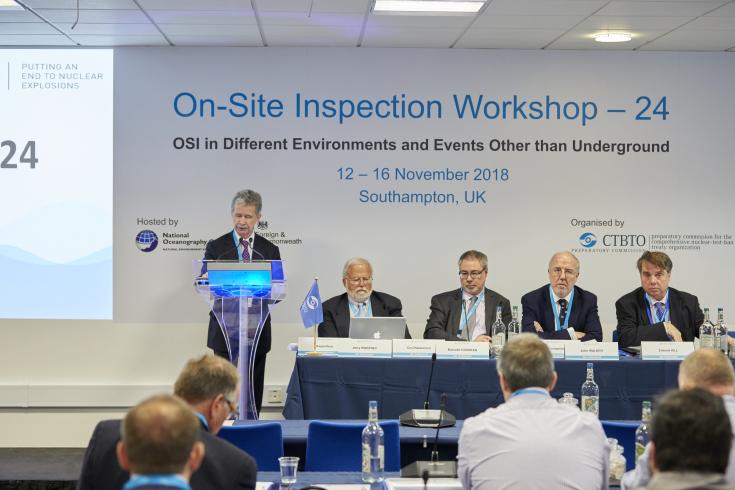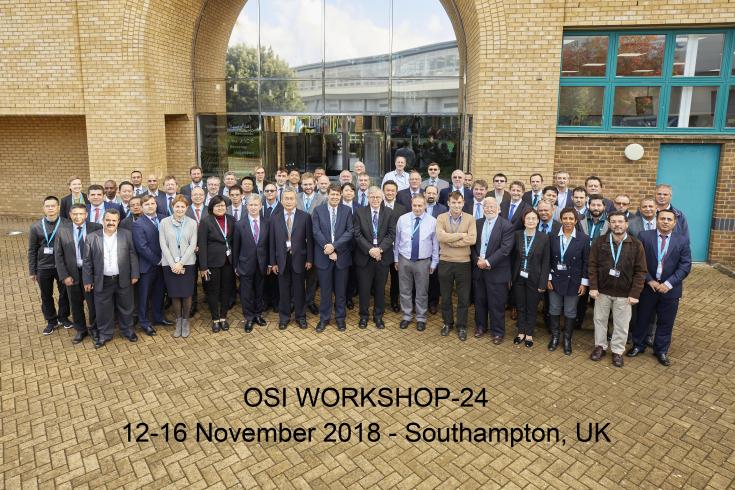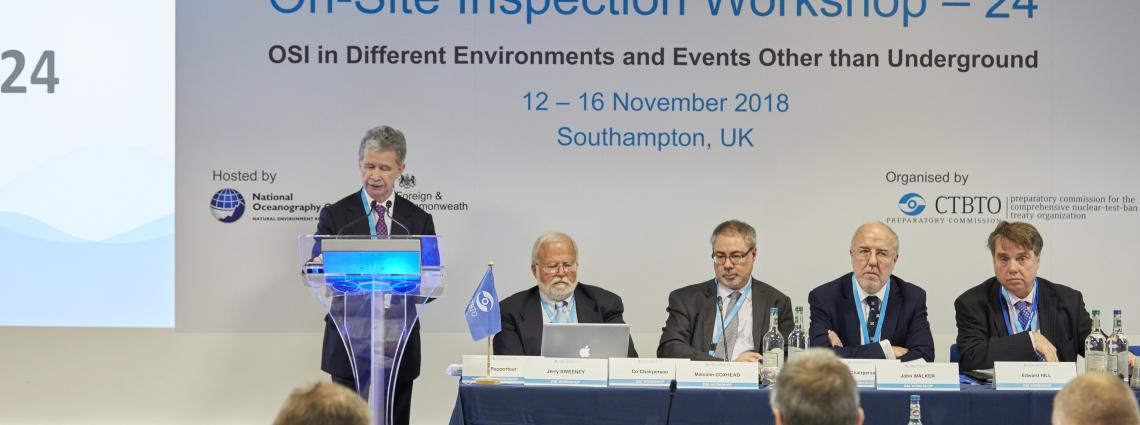On-Site Inspection Workshop-24: OSI in different environments and events other than underground
But what are the challenges faced if the location of a suspicious event was other than underground, underwater in shallow or deep inland seas, on the high seas, in territorial seas and in areas beyond the jurisdiction or control of any state?

OSI Director Vadim Smirnov delivering ES's message to Workshop-24

Workshop-24 Plenary Session
Discussions on legal aspects at Workshop-24
Participants at Workshop-24 Plenary Session on legal aspects
Workshop-24 provided a unique forum for in-depth discussions among OSI experts and generated a number of valuable findings, observations and recommendations on OSIs in different climates or geophysical environments and events other than underground nuclear explosions.
Discussions at Workshop-24 Expert Group A
Discussions at Workshop-24 Expert Group B
Workshop-24 participants visiting the Marine Robotics Innovation Centre
Workshop-24 participants at UK's national marine sediment core repository
The National Oceanography Centre’s expertise, including legal aspects and its marine equipment contributed to the dynamic discussions taking place. Workshop participants had opportunities to tour facilities related to marine robotics, drilling for sediment core samples and the UK’s national marine sediment core repository, as well as networking with experts in these fields.
Workshop-24 Closing Session
Participants at Workshop-24 Closing Session

Workshop-24_Group_Photo
21 Nov 2018
